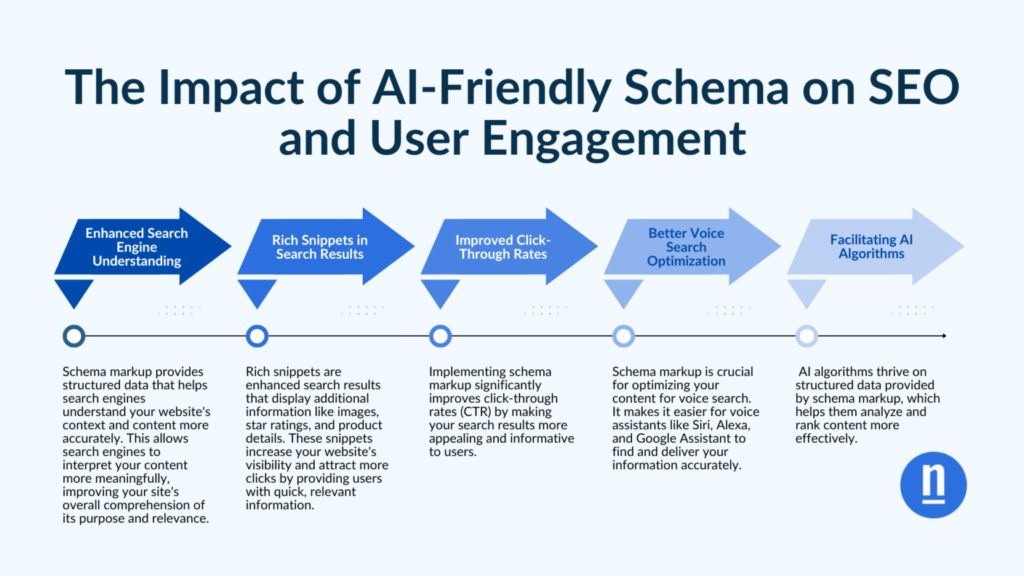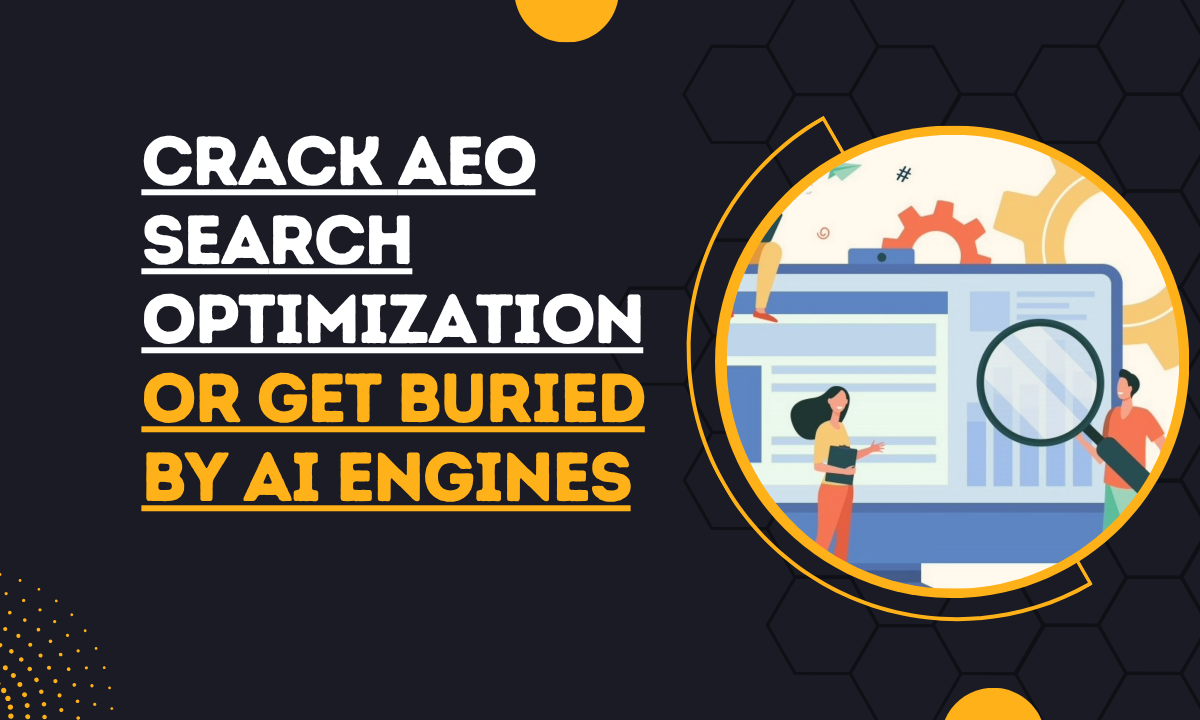Crack AEO Search Optimization or Get Buried by AI Engines
AEO search optimization is the critical survival code for digital visibility in 2026 and beyond.
AI engines like ChatGPT, Perplexity, and Google SGE are transforming how people search. Traditional SEO is slipping fast.
You can no longer rely on keywords alone.
What matters now is intent clarity and structured, conversational answers that AI can trust. This shift rewards precision, not volume.
The rules of visibility are changing; the engines are rewriting them.
So how do you stay seen?
By mastering AEO search optimization, you align with how machines think.
Learn to answer smarter, not louder, and your brand will rise where others fade.
What Exactly Is AEO and Why It Matters Now
Understanding the Shift from SEO to AEO Search Optimization
AEO (Answer Engine Optimization) is changing the entire game of visibility in AI search.
Earlier, websites competed for clicks and ranking positions.
Today, what truly matters is becoming the chosen “answer” by AI systems such as Google’s SGE, ChatGPT Search, and Perplexity AI. These tools no longer list ten blue links; they summarize, cite, and curate authoritative responses.
For U.S. businesses aiming for digital dominance, AEO search optimization defines whether your brand shows up in AI-driven answers or disappears in obscurity.
The focus is no longer being found, but being featured.
Why It Matters for U.S. Brands Competing in AI Search
In the American digital market, AI search visibility now determines online survival.
Traditional SEO relied on backlinks and keywords; AEO adds another layer—semantic context and user-intent understanding.

Source: SearchEngineJournal
Search engines powered by AI models analyze structured data, schema, and topical authority before selecting which website to quote.
If your content doesn’t align with how AI interprets intent, your visibility in AI search USA results will drop sharply.
Businesses that master AEO search optimization early gain the edge to dominate answer engines, voice assistants, and conversational interfaces across the U.S. market.
The New Search Reality — From Clicks to Direct Answers
Zero-Click Behavior and AI-Powered Search Evolution
The age of zero-click searches is here.
Users no longer need to browse multiple sites when AI overviews instantly summarize what they need.
Platforms like Google’s Search Generative Experience (SGE) and ChatGPT’s browsing model now dominate how people consume information.
These AI-powered content discovery tools pull answers directly from verified sources, reducing dependency on traditional SEO rankings.
For marketers focused on AI search optimization, this shift represents both a challenge and an opportunity.
The priority is no longer traffic, but trust.
And in AI search, trust is built through precision, authority, and relevance.
Why U.S. Brands Can’t Ignore AI Search Visibility
American consumers now rely heavily on smart assistants, connected cars, and wearable tech for immediate answers.
This makes AI search visibility in USA the new frontline of brand presence.
Businesses that fail to optimize for answer-driven queries risk fading from digital discovery altogether.
In this landscape, AEO search optimization becomes the strategic core of survival. Understanding how AI overviews extract, cite, and display brand data is critical.
Every snippet, schema, and structured answer matters.
Ignoring this evolution means handing visibility to competitors who train AI engines to recognize them first.
How AI Engines Choose What to Cite and Show
Inside the Decision Logic of AI Search Engines
Have you ever wondered why some sites get cited in AI overviews while others don’t?
AI engines like Google SGE (Search Generative Experience), Perplexity AI, and ChatGPT Browse operate on sophisticated models.
These systems blend semantic entity mapping with vector search optimization.

Source: Educba
Not only that, but these technologies also interpret meaning rather than just matching keywords.
They evaluate structured data accuracy, context, and entity alignment.
All this happens much before deciding what qualifies as credible. For you, this means content must be technically sound, fact-checked, and clearly written.
AI engines prioritize transparency, trust, and schema precision when selecting sources to feature.
Building Content AI Engines Can Understand and Cite
To appear in AI snippets or answer cards, you need to speak the language of the machine.
That involves structured metadata, schema markup, and contextual clarity.

Source: Dignitas.digtal
Think of it as teaching AI how to “read” your expertise. The better it understands your page structure, the more likely your content earns visibility through AI search citation.
Brands that master vector search optimization and semantic tagging consistently rank higher in answer-driven results.
When you make your information machine-readable, relevant, and verified, AI engines understand it better.
In fact, they’ll showcase it first.
Decoding User Intent — The Core of AEO Search Optimization
Understanding Intent in AEO Search Optimization
AEO search optimization begins with one central truth: intent drives visibility.
If your content only lists facts, you miss the emotional and contextual layer AI engines seek.
Every search query hides a motivation, a problem to solve, or a curiosity to satisfy. When you align your writing with that intent, AI systems like Google SGE and ChatGPT Browse recognize it as meaningful.
They reward relevance over repetition.
Ask yourself before writing, “What is the reader really trying to find?”
That question, answered well, builds the foundation for higher AI search visibility.
Writing Conversationally for Better AI Answer Ranking
Intent-based writing works when you treat your audience like a conversation, not a data dump.
Use question-led subheadings, structured explanations, and brief, clear answers to reflect answer engine optimization logic.
AI engines interpret such writing as clarity, not complexity. This helps your AEO search optimization efforts succeed across platforms like Perplexity AI.
You also guide algorithms by embedding natural language patterns, making it easier for them to map and cite your work.
Remember, you are not writing for search, you are writing for understanding.
And that distinction transforms how AI decides what to show.
Structured Data and Schema — The Silent Power Behind AEO Search Optimization
How Schema Tells AI Engines What to Trust
SEO expert, Neil Patel says, “Structured data, also called schema markup, is a type of code that makes it easier for search engines to crawl, organize, and display your content.”
Structured data is the invisible translator between your content and AI engines like Google SGE or Perplexity AI.

Source: InLinks
Schema markup and JSON-LD tags help define the who, what, and why of your information.
When search systems understand that, they can classify and cite it with confidence. Think of schema as metadata with meaning, shaping how AI ranks your authority in answer engine optimization.
Without this structured clarity, even valuable insights can get ignored.
Ask yourself, can your content speak the AI language fluently enough to be trusted and reused?
Why Schema Precision Powers AEO Search Optimization
In AEO optimization, structured data is your passport to AI visibility optimization.
Linked knowledge graphs and schema precision tell systems how to represent your brand consistently across AI-driven results.
These technical signals may seem small, but they influence credibility and accuracy more than many realize. Every tag adds context, every link builds trust.
For tools like ChatGPT Browse and Perplexity AI, schema clarity means fewer errors in citation and better answer placement.
This is where great content meets great structure.
If you miss this layer, your visibility will stay buried.
Crafting Conversational Content for AEO Search Optimization
How Natural Language Boosts AI Understanding
AEO search optimization thrives when your writing mirrors how people really speak.
Use natural language queries, short sentences, and everyday phrasing that large language models can easily interpret.
Imagine teaching a curious reader instead of trying to impress a machine.
When you frame ideas through questions like “how,” “why,” or “what,” AI systems recognize intent and context. This conversational flow enhances semantic mapping and vector search optimization.
The result?
Better AI interpretation, improved citation chances, and content that feels genuinely human.
Write to explain. Teach clearly.
The algorithms will reward you for it.
How Do You Structure Content for AI and Human Clarity?
To master answer engine optimization, organize your content around clarity and flow.
Use concise summaries at the start of sections and include Q-based headers that guide both readers and AI systems.
Paragraph-level answers should deliver value quickly, using precise context and topic clusters.
These structures help tools like Google SGE, ChatGPT Browse.
They help Perplexity AI connect meaning through vector search optimization.
Clarity beats cleverness every time.
The easier your answers are to extract, the higher your visibility in AI-driven environments.
So, ask yourself, is your writing clear enough to be quoted by an algorithm?
Authority, Backlinks, and Off-Site Signals in AEO Search Optimization
Why Is Authority Still Important in AI-Driven Rankings?
AEO search optimization still depends on authority.
AI engines like Google SGE and Perplexity AI assess not only what you write but who recognizes you.
Backlinks, credible citations, and consistent mentions act as trust signals within AI answer ranking systems.

Source: Vazoola
Each digital reference strengthens your entity profile, helping algorithms understand your reputation and reliability.
Think of authority as a credibility currency.
The truth is authentic engagement and references for your brand is crucial.
That’s because it becomes easy for AI search visibility models to prioritize your content across multiple platforms.
Are others quoting you yet?
Building Off-Site Signals That Strengthen AEO Performance
Off-site signals are often underestimated, yet they form the backbone of answer engine optimization.
When your content appears in podcasts, expert roundups, or social discussions, AI entities link these references through semantic mapping.
Consistent signals across media platforms enhance your standing in AI answer ranking ecosystems. Tools that track vector search optimization patterns can help reveal where your brand exists semantically.
Remember, real conversations online build digital credibility faster than mechanical link-building ever could.
Stay visible, stay authentic, and you teach AI systems to see your expertise as topical authority, not coincidence.
Tracking Performance — Measuring What You Can’t See
Redefining Analytics for AI Search Visibility
Traditional metrics no longer capture what matters in AEO search optimization.
Since most AI summaries skip website clicks, visibility must be measured differently.
Focus on impressions inside AI overviews from tools like ChatGPT Browse and Google SGE. Also, monitor where Perplexity AI references or quotes your brand.
These signals reflect AI trust and content reach beyond standard traffic data. Ask yourself, are you tracking what the machines see or just what users click?
Measuring Context Through Vector and Semantic Signals
True AEO success depends on how effectively your content embeds in semantic entity mapping.
Use advanced analytics tools that visualize vector search optimization, citation frequency, and entity alignment.
These insights reveal how AI interprets and connects your topics with authority clusters online. In short, you measure not just visibility, but meaning.
By aligning your strategy with these unseen signals, you stay ahead of algorithm shifts and maintain lasting recognition in the evolving AI-driven search ecosystem.
Common Pitfalls and How to Stay Ahead in the AEO Race
Over-Optimization Hurts AI Search Ranking
Trying too hard can backfire.
Overloading schema or repeating AI search keywords makes your content look artificial. Instead, balance structure with readability.
Let your natural brand voice lead.
Search engines now favor content that reflects genuine expertise and user intent, not keyword stuffing or forced phrasing.
Duplicate Schema Confuses AI Discovery
Duplicate schema across pages dilutes clarity in AI search optimization. Each page should serve a unique query or entity.

Source: Ndash
When structured data repeats, AI engines struggle to determine which version is most relevant.
Clean, distinct markup ensures your content stands out in both AI overviews and vector search mapping.
Authentic Voice Wins Long-Term Trust
Your tone builds or breaks trust.
In AEO search optimization, authenticity shapes how AI models evaluate credibility. A consistent, clear voice improves entity confidence and brand recall. Don’t imitate competitors.
Instead, answer questions naturally and align your tone with real audience needs.
That’s how visibility compounds over time.
Stay Updated with U.S. SEO and AEO Trends
AI-driven search algorithms in USA evolve fast.
What works today might fade tomorrow.
Follow trusted U.S. digital marketing sources, AI research updates, and SEO thought leaders.
Understanding how American trends shape global AEO strategies keeps you ahead, while others rely on outdated optimization tricks.
Knowledge compounds, so stay curious.
Adaptability Beats Aggressiveness Every Time
The AEO landscape rewards accuracy, not aggression.
Instead of chasing volume, focus on improving AI entity recognition and user intent matching. Adapt to algorithm shifts with clarity and speed.
Ask yourself, “Am I answering better than before?”
That question keeps your AI search visibility future-proof and authentic.
FAQs
1. What makes AEO Search Optimization different from traditional SEO?
AEO Search Optimization focuses on intent, not just keywords. Instead of ranking for clicks, it aims to appear in AI overviews and voice-based results. Traditional SEO targets page rank and backlinks. AEO trains AI engines to recognize your content as an authoritative entity worth citing directly.
2. How does structured data improve answer visibility in AI search?
Structured data acts as a translator for AI systems. When your site uses schema markup, AI search algorithms easily interpret your content’s meaning. This increases visibility in AI-driven summaries, snippets, and answer boxes, helping your brand appear naturally in conversational or voice-based responses.
3. Why are zero-click searches increasing in AEO environments?
Zero-click searches rise because AI search engines now deliver direct answers instead of links. People get instant responses from tools like Google SGE and Perplexity AI. As more queries are satisfied within AI interfaces, optimizing for AEO ensures your content still earns exposure and semantic recognition.
4. When should businesses start implementing AEO strategies?
The best time is now. AEO is already reshaping AI search visibility and brand discovery. As answer engines evolve, early adopters gain entity authority before competitors. Start building structured content, clear FAQs, and contextual relevance so your website becomes a go-to source for AI-based retrieval.
5. Where do AI engines source their answer data from?
AI engines pull from trusted databases, structured web pages, and high-authority domains. They rely on vector search indexing and semantic understanding to locate precise answers. Verified sources, credible backlinks, and properly marked entities help your website feed this ecosystem of AI knowledge extraction.
6. How can small websites compete in AEO-driven search results?
Small sites can thrive by focusing on niche expertise. In AEO search optimization, depth beats size. Answer specific, under-served questions that AI engines value. Create structured data, use internal linking, and maintain clarity. Even a single well-structured page can earn AI answer citations.
7. What tools help track AEO performance and AI citations?
Tools like Google Search Console, AlsoAsked, and Perplexity AI tracking dashboards help monitor AI search visibility. You can also use entity mapping and vector analysis tools such as MarketMuse or Surfer SEO. These reveal how AI perceives your authority and whether you appear in answer engines.
Related Posts
AI Visibility Optimization: Survive the Next Search Shift
Topical Authority for AI Search: How to Rank Higher in 2026
AI Search Optimization — Why Old SEO Won’t Save You Now
Don’t Miss: Google AI’s Search Revolution Changes Everything
Conclusion
AEO search optimization is not about gaming the system—it’s about aligning with the new reality of intelligent, intent-based discovery.
AI engines no longer ask, “Who ranks highest?” but “Who explains best?”
The winners will be brands that create clarity, trust, and contextual accuracy in every answer.
By embracing schema, authority, and natural language precision, you transform your content into a digital asset that AI systems cite and users remember.
The threat is real: fail to adapt, and your brand gets buried under smarter competitors. Crack AEO today—not to chase visibility, but to secure relevance in the AI age.

